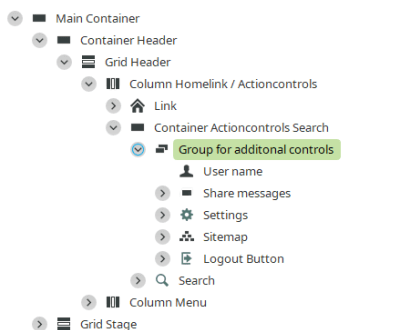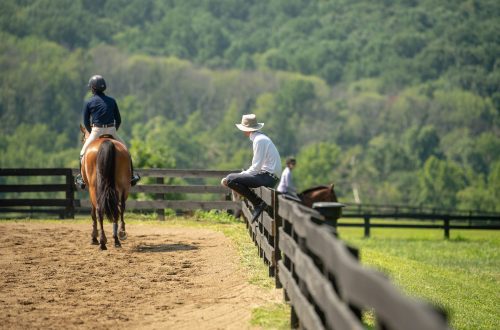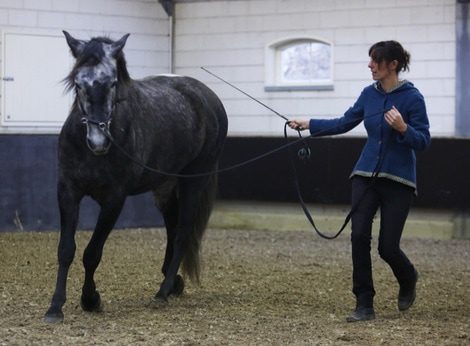
Communication with the horse: communication in riding
Communication with the horse: communication in riding
Rider-horse communication often amounts to nothing more than dominance and conditioning. But the true communication between rider and horse is something immeasurably more than that.
Rider communication structure
Rider-horse communication is perhaps the very essence of riding. People should think about the fact that the right to control another species of animal is worth earning, that it is not given to us just like that, in itself, as a given. We must bear some responsibility. A horse would never choose the fate of a mount for itself, would not want anyone to ride on its back. Providing us with comfort while riding is not part of her natural duties.
Of course, there are also surprisingly docile horses who sincerely care about their riders. They are often used in children’s sports or in hippotherapy. And this once again proves that horses are the noblest creatures.
We are used to seeing everything that happens from our own point of view (what we want or not, what we can or not, etc.). We think about what our actions can lead to, we plan something. But when we are on horseback, it is impossible to think only of ourselves and look only at ourselves.
Playing, for example, golf, we can only rely on ourselves and our objective skills. If we can’t even hit the ball, then the ball will never hit the hole. We understand and accept this. This seems to us undeniable.
However, when it comes to riding, the truths are no longer indisputable. Thus, we often misjudge our posture and our ability to use controls correctly. We listen to coaches, read literature, form our views on the basis of a variety of methods. When we ride, we subjectively understand what we want to achieve and how we plan to do it. But can we be sure that we are right? Perhaps our subjective feelings are not correct, and while working with the horse, we somehow cause him discomfort (harm, pain, etc.)? If we cannot be 100% sure of the correctness of our own actions, then how can we believe that the horse will certainly understand us and do what we ask of him?
To become a good rider, get a feel for the horse and learn how to use the controls correctly, we must realize our responsibility and the complexity of the task before us. We need to learn to be honest with ourselves about our capabilities. We must see and understand what, why and how we need to correct and improve in ourselves, and only after that – in the horse.
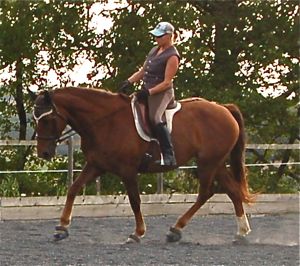
Successful communication of the rider is ensured by the correct posture and muscle memory that helps to work in the right way (straight and in balance). Over time, you will be able to feel the horse completely and work intuitively.
In other words, in order to learn to control both yourself and the horse, you must reach a level of development where your body dynamically corrects the movements of the horse intuitively. The fact that every horse is different, and even the same horse can perform differently on any given day, will make your achievement especially important.
The fact that there are so many combinations of riders and horses and it is not easy to study the performance and efficiency of the rider separately from the horse is unfortunately conducts to the fact that there are more and more riders who blame the horse for their mistakes, or shift most of them onto it. They prefer to hush up their shortcomings.
Most likely, if you could buy a golf club that had a system that brought the ball closer to the hole, it would attract more people than a club where you would need only your strength and talent to achieve a result (hit in hole). Even if the automation will help you successfully hit the balls into the holes, your actions will not give you a real physical satisfaction from the fact that you yourself were able to achieve success.
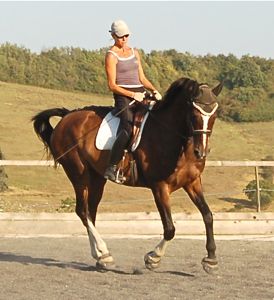
In practice, the best ways to improve your skills are not only to work regularly in the saddle and develop skills, but also to study photos and videos, taking into account the advice and experience of trainers whose knowledge you trust. Unfortunately, nowadays there are so many “trainers” who strive for easy and quick earnings, ignoring or not knowing the basics of the rider’s training system.
Rider communications: composition
The composition of communication is the language in which the rider and horse communicate. This is a kind of “glue” that connects them, binding them into a single whole. Ideal communication will give you not a conversation, but a kind of unity of consciousness.
The process of connecting horse and rider can be seen as the rider’s use of signals that convey his demand and at the same time make it possible to bring the horse into the correct state (balance and straightness). The signals will be heard by the horse and he will begin to follow them, align and find balance. Thus, a new partnership was born – “rider-horse”.
The technical correctness of the rider’s seat is very important. Obviously, the horse will be easier to work if the rider sits confidently in the saddle and his seat does not negatively affect the work of the pair. However, for successful communication, it is especially important how the rider processes the signals and transmits them to the horse.
People have learned to dominate the horse, to force it, and this often ends with the horse working in tension, its movements become unproductive, the horse cannot adapt, learn, grow, the quality of its movements does not improve, the horse cannot learn to carry itself.
How can you work with a horse without dominating it, especially if the horse refuses to cooperate?
First of all, the rider must understand the boundaries, the limits in which one can interact with the horse, understand where the line is that should not be crossed, and give signals in such a way that it would not be violated. Every horse should respect our boundaries, so why shouldn’t we? After all, it is in our power to avoid excessive pressure. And this will be the basis of a good ride.
What happens when a rider respects boundaries? He achieves a higher level of communication when the needs of the horse are listened to and supported. The horse should not be nervous if he is physically unable to follow the command to the rider (due to his development or level of training) or receives confusing signals from him that are too difficult to understand. She should enjoy riding just as much as you do! And this can be achieved only by delving into the problems of the horse and working with them in mind.
Sometimes training may involve a certain level of discomfort for the horse, and the rider may also feel some discomfort.
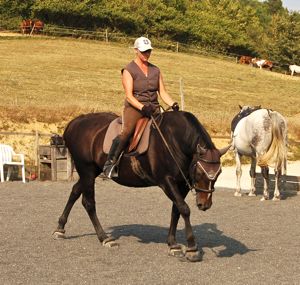
At the same time, we can always reduce the level of requirements for ourselves, but the same principle does not always work in relation to a horse.
Surprisingly, horses appreciate their physical sensations very well. They are able to understand the difference between “good” workout pain, when weak muscles are stretched and put to work, and dead end pain, when their damaged body suffers.
The higher the level of communication between rider and horse, the lower the risk of such situations. Fighting is not the best method to achieve partnership.
Translation by Valeria Smirnova (source).




